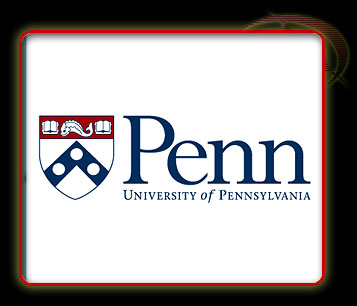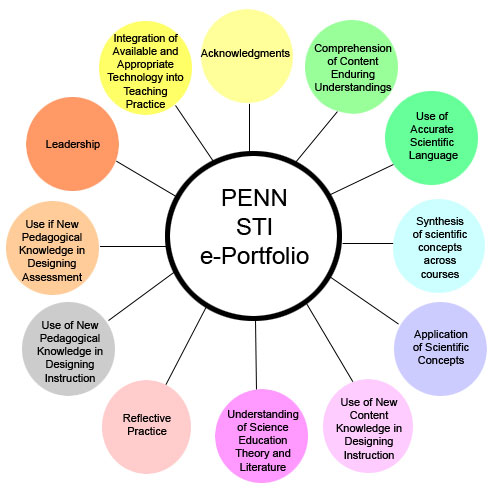| Baseline
Evidence: Reflective self-evaluation for video-taped baseline lesson on equilibrium provided with MCE application JUNE 2007 |
||||||
|
From reflective self-reflection:
Before entrance into the MCE program, I was asked to tape a lesson and reflectively self-evaluate it. This first excerpt from the self-evaluation shows that before the program, I was still hesitant and uncomfortable with changing my instruction and engaging in inquiry that would reform my teaching. The second excerpt shows that while I wanted the change, I did not know where or how to begin--there is a clear lack of focus. The third excerpt shows that assessment of student understanding (and the efficacy of my own teaching) was still not very important to me; I did not understand its value, nor have much experience with the variety (quantitative and qualitative) research methods I could use to get a more comprehensive perspective of what was happening in my classroom. |
| Later
Evidence: |
|||||||||||||||||||||||||||||||||||||||||||||||||||||||||||||||||||||||||||||||||||||||||||||||||||||||||||||||||||||||||||||||||||||||||||||||||||||||||||||||||||||||||||||||||||||
| My first piece of later evidence shows
how I became
more aware of what I wanted to research in my classroom by simultaneous
reflection and reading of science education literature. My second
piece of evidence summarizes my project and the outcomes of my
research, in which I set out to see the effect of what I had read in
the research and applied in my
classroom. The following is a brief summary of the relevant
research articles: Brief overview of literature (full citations at bottom of page): Through my participation in the MCE program (particularly through my coursework in Edu536 and Edu636), I became interested in researching and improving students' grasp of the particulate nature of matter as a way to improve conceptual understanding of a range of topics. I describe how and when these articles informed my research more fully in the "Why did I select this topic?" section immediately following. Williamson & Rowe (2002) was the first research paper I really read. It made me aware of the efficacy and impact of peer groups on students' engagement and success. It made a profound impact on me in showing that improving one's classroom practice often requires detailed and deliberate changes that do not often happen naturally or intuitively. Nakhleh (1993) was the paper that challenged my view of student understanding. Nakhleh showed that students can perform quite differently on conceptual and algorithmic (i.e. math-based, often reliant on memorization of patterns and strategies) problems. This made me aware of my need to more fully commit toward nourishing conceptual understandings in my students (I felt I was already quite good at fostering algorithmic understandings). Nakhleh (1992) and Johnstone (1993) both made me aware of the three levels of chemical understanding--the macroscopic, the microscopic, and symbolic. Johnstone approached this triad from a constructivist standpoint, arguing for the need to foster the connections between these disparate aspects in improving conceptual understanding. Nakleh indicated that reason why students had difficulty comprehending many fundamental concepts was based in their inability to correctly conceptualize the submicroscopic level of chemistry (particularly the particulate nature of matter) and connect it to macroscopically observed phenomena and the symbolic representations in chemical problems. Ercikan & Roth (2006) made me aware of the need for both qualitative and quantitative methods in answering a research question, and made me actually want to do the research that I had been preparing for in Edu536. The authors focused upon the necessity of asking good questions (questions that were meaningful in informing and improving teaching and learning) rather than asking questions that could be evaluated easily (but have little importance beyond publication). This article pushed me into seeing the ultimate usefulness of research in informing my classroom practice and thus, into using whatever melange of methods necessary to appropriately answer my questions. |
|||||||||||||||||||||||||||||||||||||||||||||||||||||||||||||||||||||||||||||||||||||||||||||||||||||||||||||||||||||||||||||||||||||||||||||||||||||||||||||||||||||||||||||||||||||
| EVIDENCE
#1: Research question in research proposal drafts JANUARY 2008-APRIL 2008 |
|||||||||||||||||||||||||||||||||||||||||||||||||||||||||||||||||||||||||||||||||||||||||||||||||||||||||||||||||||||||||||||||||||||||||||||||||||||||||||||||||||||||||||||||||||||
| Jan 12, 2008: |
Why did I select this
topic? The initial impetus for my research was my frustration with student performance on word problems. I had the sense that students were not really "getting" the material in the deep, conceptual way that I desired. The literature I had started reading in Edu536 provided me with the background to eventually narrow and focus my research to be meaningful in my classroom. I first encountered the ideas of impacting classroom engagement and performance by reading Williamson & Rowe's (2002) paper on the effect of peer groups. As you can see, the impact of this literature is readily apparant in the research question. Unfortunately, I was asking a question that, for all intensive purposes, was already answered by Williamson & Rowe. |
||||||||||||||||||||||||||||||||||||||||||||||||||||||||||||||||||||||||||||||||||||||||||||||||||||||||||||||||||||||||||||||||||||||||||||||||||||||||||||||||||||||||||||||||||||
| Feb
18, 2008: |
Upon further reading Nakhleh (1993), I became interested
in the dichotomy between algorithmic and conceptual undrstanding. I was encouraged to do
exploratory research of the algorithmic-conceptual disconnect Nakhleh
had observed in college classes in my own highschool
classroom.
I asked the questions because I was somewhat interested, but the
questions I was asking seemed mildly pedantic to me--not a driving
force in improving my own classroom. |
||||||||||||||||||||||||||||||||||||||||||||||||||||||||||||||||||||||||||||||||||||||||||||||||||||||||||||||||||||||||||||||||||||||||||||||||||||||||||||||||||||||||||||||||||||
| March
8, 2008: |
I
narrowed the question down into something I could more easily measure,
but this question was even more pedantic and far removed from my
classroom experience. Sometimes you
have to take a couple steps back to move forward.... |
||||||||||||||||||||||||||||||||||||||||||||||||||||||||||||||||||||||||||||||||||||||||||||||||||||||||||||||||||||||||||||||||||||||||||||||||||||||||||||||||||||||||||||||||||||
| April
24, 2008: |
Through my reading of
Nakhleh (1992) and
Johnstone (1993), I
realized I wanted to do something very specific in my own classroom to
improve conceptual understanding. In particular, I wanted to
attack the problem of student's inability to understand the particulate
kinetic nature of matter (PKNM). Eventually, in my classroom, I
not only integrated the use
of manipulatives, but also a broad range of tools targeting student's
understanding of PKNM, from animations and applets representing
the submicroscopic aspect of nature to questions asking students to
draw representations. Finally, I had arrived at
a question that was of practical value to me in my classroom, of
importance to a larger community, and focused enough to be meaningfully
researched. |
||||||||||||||||||||||||||||||||||||||||||||||||||||||||||||||||||||||||||||||||||||||||||||||||||||||||||||||||||||||||||||||||||||||||||||||||||||||||||||||||||||||||||||||||||||
| EVIDENCE
#2: Statistical analysis of students' answers to paired algorithmic & conceptual MC questions (from Nakhleh, 1993) on their final (comparison of 2008 vs. 2009) JUNE 2009 |
|||||||||||||||||||||||||||||||||||||||||||||||||||||||||||||||||||||||||||||||||||||||||||||||||||||||||||||||||||||||||||||||||||||||||||||||||||||||||||||||||||||||||||||||||||||
highlighted numbers
are significant at 95% (p<0.05)
The
second piece of later evidence shows my analysis of student performance
on paired
algorithmic and conceptual questions on the 2008 final (n=37)
and 2009 final (n=45). After having intensively integrated
submicroscopic represenations and applets and manipulatives
representing the particulate nature of matter during the 2008-2009
school year, I wanted to
identify whether students did significantly better or worse on
questions gauging their algorithmic (calculation-heavy) understanding
and conceptual understanding of gases, chemical equations, limiting
reagents, and empirical formulas.
It is important to note that statistical analysis alone can not determine the reason or causality for significant increases or decreases--however, it does highlight significant associations. This aids in identifying areas of improvement or deterioration in performance and provides a starting point for determining possible causes and thinking about what I could improve the next time I teach my class. It is evident from the data that, contrary to what I expected, my students showed significantly less conceptual understanding of gases, even as they improved their algorithmic ability to solve problems related to gas laws. There was no significant difference in any of the other question area. Since NO ONE got just the conceptual question correct, my conjecture, in looking over the actual answers chosen, is that I may have taught my lesson in a way that encouraged students in learning or retaining a misconception--they often thought that when gases are cooled, the gas not only slows down, but condenses, even at temperatures above the gas boiling point. I will have to make a point of stressing the importance of observing whether the temperature is below or above the boiling point, and emphasizing that a gas only condenses when cooled at a temperature below its boiling point (at the given pressure). I think I may have actually improved my teaching of gases in general, but made the unfortunate mistake of not accounting for a common misconception that could arise once students started visualizing and qualitatively associating particulate motion, physical state, and the effect of temperature. There was significantly better performance on the conceptual empirical formula question in 2009. Also, the average for both the algorithmic and conceptual question increased, indicating that this was an overall area of improvement. Because I do not have qualitative data to draw from, it's a bit hard to conjecture as to why--it may have been a change in my teaching, or it may have been the sample of students that took the class that year. I hope to gain a more thorough assessment in the future by making use of qualitative surveys and evaluations in concert with quantitative analysis. |
|||||||||||||||||||||||||||||||||||||||||||||||||||||||||||||||||||||||||||||||||||||||||||||||||||||||||||||||||||||||||||||||||||||||||||||||||||||||||||||||||||||||||||||||||||||
|
DISPOSITION
TOWARD CONTINUING INQUIRY
As a result of my research, I have an increased
desire to re-address the conceptual-algorithmic disconnect that
students have, particularly in learning about the nature of
gases. I have made a mental note to be more careful about how I
may unintentionally perpetuate misconceptions. I
have also grown in my awareness of the need for evaluation,
particularly because my
research results showed an unexpected outcome that I
would not have been aware of if I had not taken the time to assess the
effectiveness of my pedagogical changes.As for the following year, I plan on using and assessing (i.e. researching) the integration of web-based tools from quia.com (another great idea given to me by Mark Hayden) into my teaching. I hope to assess their effect on student engagement with mid-year evaluations (or perhaps even cogenerative diaglogues) asking for qualitative feedback. My hypothesis is that the use of this web-based support software (which is easily integrated into pre-existing materials to make them interactive) will improve class participation, accountability, and student enjoyment of my courses. Of equal importance, through my experience in Edu636 (in particular, my reading of an article by Ercikan & Roth (2006)), I have gotten more comfortable with adjusting my methods and assessment to meaningfully probe and address the question I am asking. I have become quite comfortable with quantitative methods, but I also feel that qualitative methods (e.g. interviews, surveys, evaluations) are equally legitimate and have the ability to give more nuanced information that may be more helpful in directing further efforts and iterations of a particular lesson. |
|||||||||||||||||||||||||||||||||||||||||||||||||||||||||||||||||||||||||||||||||||||||||||||||||||||||||||||||||||||||||||||||||||||||||||||||||||||||||||||||||||||||||||||||||||||
RELEVANT ARTICLES:
Ercikan, K., & Roth, W-M. (2006). What good is polarizing research into qualitative and quantitative? Educational Researcher, 35(5), 14-23.
Johnstone, A.H. (1993). The development of chemistry teaching: A changing response to changing demand. Journal of Chemical Education, 70(9), 701-705.
Nakhleh, M.B. (1993). Are our students conceptual thinkers or algorithmic problem solvers? Journal of Chemical Education, 70(1), 52-55
Nakhleh, M.B. (1992). Why some students don't learn chemistry: Chemical misconceptions. Journal of Chemical Education, 69(3), 191-196.
Williamson, V. M. & Rowe, M. W. (2002). Group Problem-Solving versus Lecture in College-Level Quantitative Analysis: The Good, the Bad, and the Ugly. Journal of Chemical Education, 79(9), 1131-1134.
Updated August 4, 2009.

